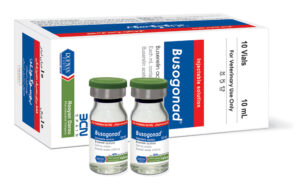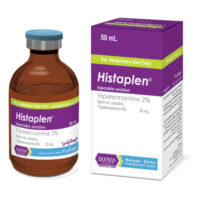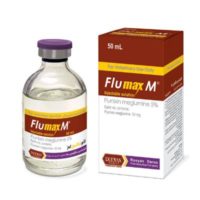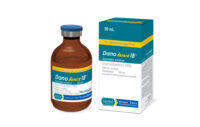
- - animals:
- - type:
- hormones
- - usage:
- injectable sterile solution
- - manufacturer:
- Rooyan Darou
- - Packaging:
- 10 ml vials
Product properties
Composition
Each ml contains:
Buserelin acetate 0.0042 mg
(synthetic analogue of GnRH)
Mechanism of Action:
Gonadotropin Releasing Hormone (GnRH) is secreted from hypothalamus in pulses from peptidergic neurons. Each pulse releases LH from anterior lobe of hypophysis gland inducing production and increase of intra-cellular calcium, activation of protein kynase C, increase of phosphatidylinositol, finally ending in production and release of LH and FSH. These 2 hormones cause rapid follicular maturation ending in ovulation.
Buserelin is absorbed rapidly from injection site and finally is metabolized in anterior lobe of hypophysis by peptidase enzymes producing small inactive peptides and some amino acids. Metabolites are excreted through urine and exhalation.
Ovarian cysts are among sub fertility factors in dairy cattle. These cysts are from follicular origin.
Clinical signs of ovarian cysts consist of: irregular estrus cycle, anestrous and nymphomania. For improving post partum fertility a Buserelin injection within first 40 days after parturition will decrease possibility of ovarian disorders.
Buserelin is used in cattle, horses and rabbits.
Other indications
Ovulation induction, estrus synchronization, in dairy herds as well as reducing parturition intervals when used simultaneously with PGF2a analogues.
Dosage and route of administration
Buserelin is used by intravenous, intramuscular and subcutaneous routes. In ovarian cysts 5 ml is injected per head of cattle. For prevention of ovulation delays 2.5 ml and for post partum fertility also 2.5 ml is injected.
Withdrawal Time
None
Precautions
Wrap empty vials in paper before disposal .
Storage conditions
Keep between 15-30° C and away from light.







